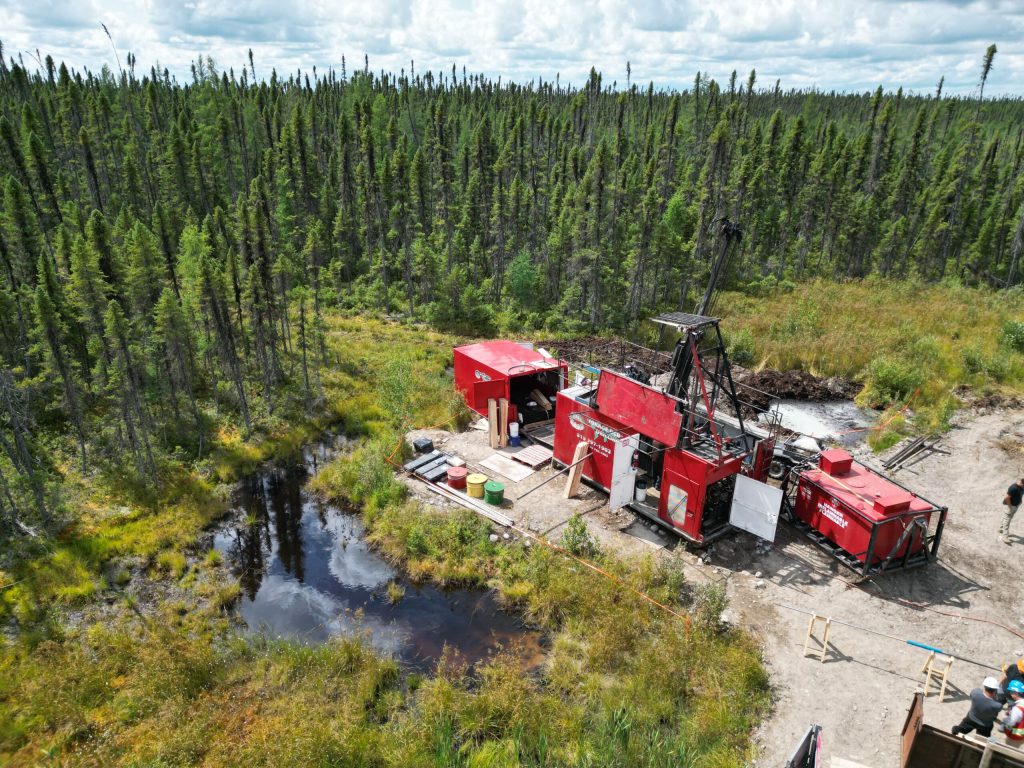Abitibi Metals discovers new drill targets at B26 Project, Quebec

Abitibi Metals Corp. [CSE: AMQ; OTCQB: AMQFF; FSE: FW0] reported the identification of new exploration targets at the B26 Project, Quebec, achieved through the application of advanced gravimetric surveying. The company recently received an updated inversion model, which has revealed high-priority exploration targets. These targets present opportunities for exploration and resource development, including better defining the B26 signature along strike, and testing a high priority anomaly at the down-dip extension of the B26 Deposit.
On November 16, 2023, the company entered into an option agreement on the B26 Polymetallic Deposit to earn 80% over seven years from SOQUEM Inc., a subsidiary of Investissement Québec.
“The identification of these new high-priority targets at B26 marks a significant advancement in our exploration strategy,” said Jonathon Deluce & CEO of Abitibi Metals. “The application of advanced gravimetric surveying and reinterpretation of historical data has allowed us to refine our targeting and enhance our understanding of the deposit and property wide potential. The down-dip anomaly, along with multiple along-strike and northwest targets, presents a compelling opportunity for resource expansion and discovery in previously underexplored areas. We are committed to leveraging cutting-edge geophysical techniques to unlock the full potential of B26 and drive long-term value for our shareholders.”
A strong gravity contrast was modeled along the down-dip extension of the B26 deposit that was based on Soquem’s 2017 Gravilog survey, density measurements from drill holes, and a 2024 surface gravimetry survey. Abitibi Geophysics reinterpreted the Gravilog data with new inversion software that takes into account the variation in gravity along the drill holes. The interpretation was developed collaboratively by Abitibi Geophysics and Abitibi Metals geologists, to ensure that each anomaly corresponded to an area that was prospective geologically.
The survey was composed of 1,466 stations distributed on 26 lines; 250 to 500 metres spaced, completed in June 2024 by Geophysics TMC. Abitibi Geophysics personnel conducted a survey analysis and reinterpreted the borehole Gravilog data, combining it with the surface gravity lines survey.
Down Dip Target: The modeled target has a diameter of 400–500 metres. Surrounding drill holes, such as 1274-17-255 W1, indicate strong sulfide content, with semi-massive intervals hosting copper-zinc mineralization over metric intervals near the upper limit of the gravity anomaly. Only the boundaries of this new target were covered with limited drilling and can be considered open. The majority of the target is located outside of the interpreted outline of the mineralized system and elevated copper equivalent grades have been observed in historical drill assays on the target’s boundary. Highlights include 1.2% CuEQ over 10.5m starting from 767.1m (1274-16-231), 2.4% CuEQ over 11.8m starting from 1,111m including 36.5% CuEQ over 0.7m (1274-16-239), and 2.7% CuEQ over 10.5m starting from 990m including 15.1% CuEQ over 1.1m (1274-17-248).
Along Strike and Northwest Targets: TMC Geophysics discriminated a series of positive gravity anomalies along strike, expending up to 6km west of B26 and also north-west of the deposit. The targets consist of vertical lenses with varying dimensions, as defined by the inversion model generated by Seequent Voxi-GRAV-3D Software. These targets were identified based on modeled density contrasts, including a 3 km-long elongated low density contrast aligned with the B26 system, as well as additional anomalies in the central area of the property, likely associated with sulfide-bearing volcanic contacts.
A modeled low gravity anomaly may correspond to the contact at depth with the Brouillan intrusion. Abitibi Geophysics generated a model that focused on a gravity contrast of a few hundred meters south of the B26 zone. The inversion model was based on density measurements taken on drill core.
The surface gravity anomaly revealed a continuous gravimetry contrast covering the entire strike length of the Enjalran-Brouillan contact south of the B26 mineralized trend. The inversion model showed eight distinct high gravity anomalies. The eastern one corresponds to the position of the B26 mineralization. Going westward, the environment north of anomalies are not drill-tested. Different interpretations suggest the anomalies may be related to the presence of mafic dyke swarms observed in the hanging wall of the VMS mineralization. AMQ intends to use these anomalies as a foundation for exploration, investigating their potential as proximity indicators for locating additional polymetallic mineralized systems.
These geophysical methods, integrated into the exploration strategy to locate additional mineralization at depth and along strike, are continuously evolving.
Abitibi’s portfolio of strategic properties provides target-rich diversification and includes the option to earn 80% of the high-grade B26 Polymetallic Deposit, which hosts a resource estimate of 11.3MT at 2.13% Cu Eq (Ind) & 7.2MT at 2.21% Cu Eq (Inf), and the Beschefer Gold Project, where historical drilling has identified 4 historical intercepts with a metal factor of over 100 g/t gold highlighted by 55.63 g/t gold over 5.57 metres and 13.07 g/t gold over 8.75 metres amongst four modeled zones.
